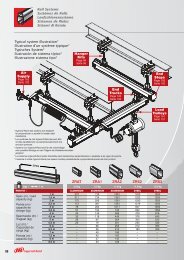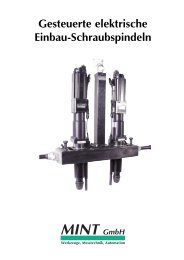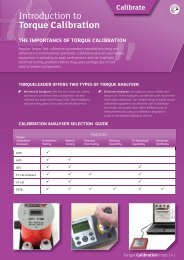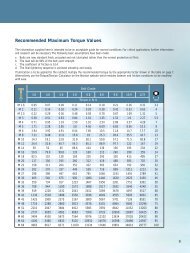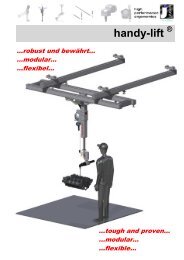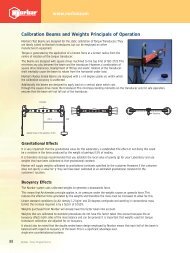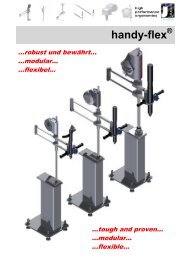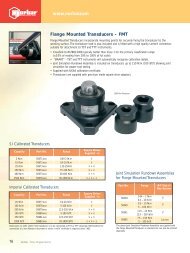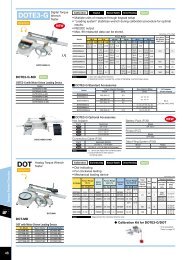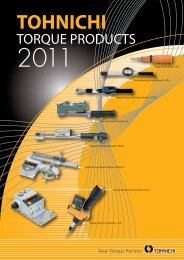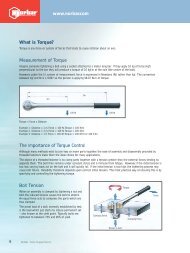NORBAR PRODUCT CATALOGUE
NORBAR PRODUCT CATALOGUE
NORBAR PRODUCT CATALOGUE
- No tags were found...
You also want an ePaper? Increase the reach of your titles
YUMPU automatically turns print PDFs into web optimized ePapers that Google loves.
www.norbar.comMeasurement and Calibration - Glossar of TermsThe following information may help in selecting the appropriate measuring device for your needs.AccuracyThe precision of the instrument which can be reported in three ways.1. By quoting the guaranteed tolerance as a percentage of the reading or indicated value, (eg. 0.5% of Reading ).2. By quoting the guaranteed tolerance as a percentage of the full scale value of the instrument, (eg. 0.1% FS or 0.1% FSD).3. By quoting a ‘class’ of device in accordance with BS7882:2008 Method for calibration andclassification of torque measuring devices . (See page 90).Modes of perationFirst Peak of Torque - when a click type torque wrench signals that the set torquehas been achieved, the applied torque will momentarily drop before climbing again. Generallythe fastener stops rotating at point 1, and from a standstill, the breakaway torque to achievefurther rotation of the fastener will be higher than point 3b. Only if the operator is veryinsensitive to the break point will the final tightening effort be incorrect.First Peak of Torque mode will detect the break point of the torque wrench, not thehighest torque applied.Peak Torque - this mode of operation will record the highest torque applied. In thecase of a click type torque wrench this may be higher than the actual break point if thewrench continues to be loaded beyond the break.Consequently, Peak Torque is more useful for calibrating devices without a break signal such as dial or electronic wrenches.Track - this mode has no memory at all.When the load is removed the display will return to zero.Track is used for calibrating the device itself or for monitoring a fluctuating torque.ResolutionThe smallest measurement interval that can be determined on the indicating device.This applies to analogue and digital devices.Number of igitsDigital displays are described as having a certain number of ‘digits’ or ‘active digits’.Half digits can be used to increase the resolution of a device without the expense of going to an additional full active digit.Eg 1. 1000 N.m displayed on a 4 digit system would read 1000 (resolution = 1 N.m).Eg 2. 1000 N.m displayed on a 4 1 2 digit system would read 1000.0 (resolution = 0.1 N.m).Active digits change as the torque changes. Non active digits only assist in showing the magnitude of the torque.For example, 10,000 N.m requires 5 digits to display it’s magnitude.Eg 3. With 4 active digits (and 1 passive digit), 10,000 N.m would change in steps of 10 N.m.Eg 4. With 4 1 2 or 5 active digits, 10,000 N.m would change in steps of 1 N.m.Signal Processing1 = Torque wrench activates2 = ‘Click’ heard3a = Wrench released quickly3b = Wrench released slowlyElectronic Circuitry falls broadly into two types, analogue and digital, with most electronic measurement systemscomprising a mixture of the two.There are also whole analogue electronic systems, but these are rare in torquemeasurement. Most systems start with an analogue signal.The point at which the signal is converted defines the type.Analogue systems – one in which the signal is processed before being converted to digital.Digital systems – the original analogue signal is converted to digital before processing.64 Norbar - Total Torque Control



